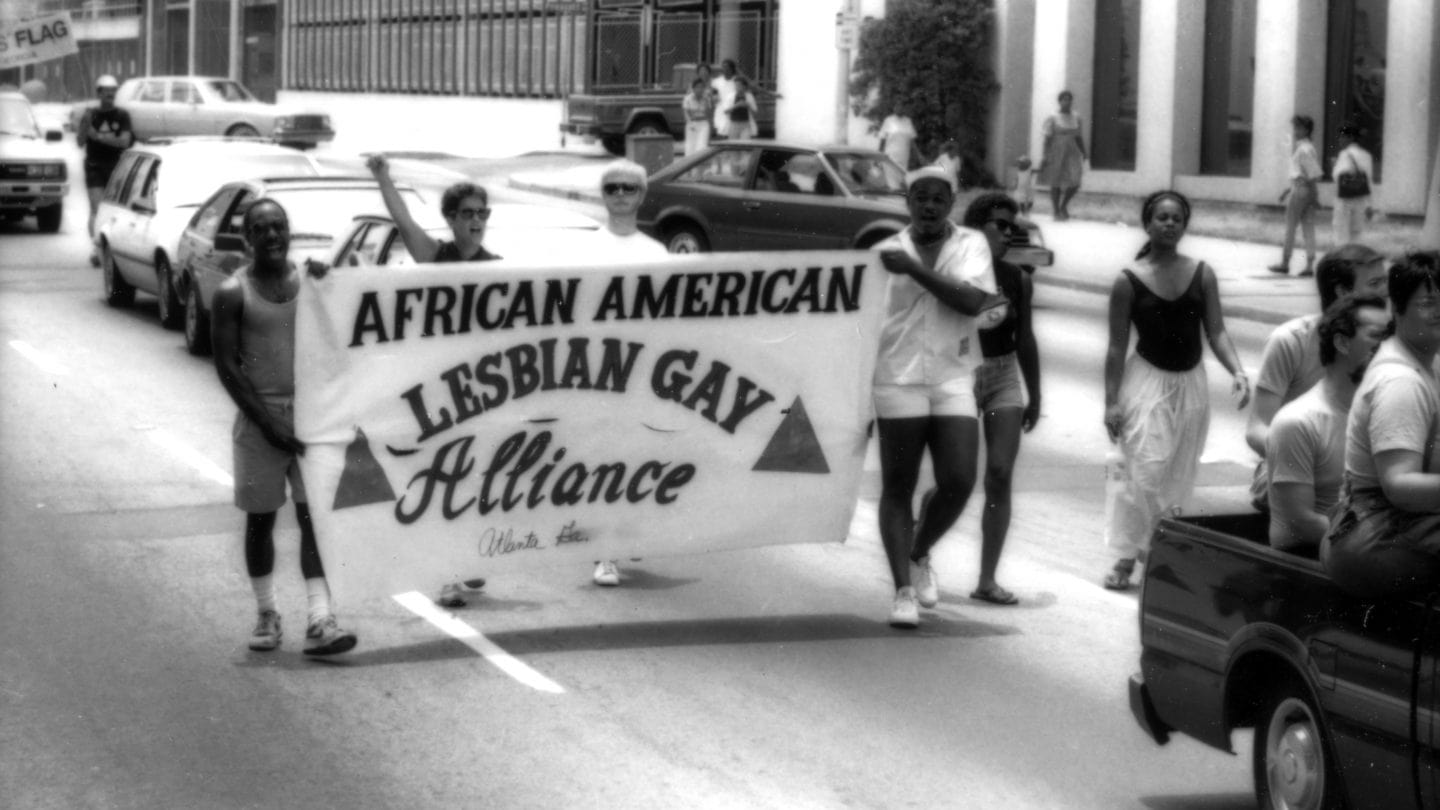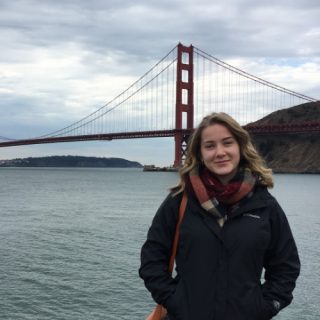
On June 28, 1969, a police raid of the Stonewall Inn, a gay bar in Manhattan’s Greenwich Village, escalated to riots involving over 2,000 protestors and 400 policemen. The demonstration lasted four days and occupied the Stonewall Inn, neighboring Christopher Park, and the surrounding streets—all of which were designated as a National Monument in 2016. The Stonewall Uprising is credited as the incendiary point for the modern-day LGBTQIA+ liberation movement across the United States.
Making a Movement
The Stonewall Uprising certainly wasn’t the first public demonstration in America’s LGBTQIA+ social movement. Notably three years prior in 1966, a group of drag queens and transgender women in San Francisco stood up to police violence at Compton’s Cafeteria. That same year, New York City activists staged a “sip-in” in New York City protesting the State Liquor Authority’s ban on serving homosexuals. On New Year’s Day 1967, officers beat and arrested fourteen gay men for “lewd conduct” at the Black Cat Tavern near Los Angeles. The following day, hundreds of demonstrators showed up outside the Black Cat to protest police raids on gay bars.
That’s only a handful of dissents from across the United States at the end of the 1960s. Some historians place the start of the movement even earlier—some 30 years prior.
So why is Stonewall seen as the catalyst for the modern LGBTQIA+ social movement? First, the Stonewall Uprising is thought of as the first time LGBTQIA+ people united behind a common cause. The Stonewall Inn was known a respite for those who had no other place to go in New York. “For $3.00 admission, one could stay inside, out of the winter’s cold or the summer heat, all night long,” wrote Dick Leitsch, the first gay journalist to cover Stonewall. “The Stonewall became ‘home’ to these kids. When it was raided, they fought for it. . . .[T]hey had nothing to lose other than the most tolerant and broadminded gay place in town. . ..” Protestors from across the LGBTQIA+ community filled the streets around Stonewall to defend the site many considered the only truly safe space in Manhattan.
Second, the riots at Stonewall received more press coverage than any prior LGBTQIA+ demonstration. Many people across the country—and the world—were confronted for the first time with images of a gay rights protest. Much in the same way television brought Vietnam into living rooms, news outlets brought the LGBTQIA+ community out of the shadows of far-off cities and into the national consciousness.
The third reason Stonewall is seen as the ignition point is the way in which it was memorialized. The Christopher Street Liberation March, organized by the Gay Liberation Front, took place on June 28, 1970, one year after the Stonewall Uprising. It began at the Stonewall Inn on Christopher Street and marched through Manhattan to Central Park. When it began, there were a few hundred participants. When the group arrived at Central Park, several thousand demonstrators had joined the ranks. This march is what set the president for today’s Pride parades. The Christopher Street Liberation March became the template for LGBTQIA+ people to show their unity and strength in a public forum.
Regardless, Stonewall became a galvanizing moment in the history of America’s, and Atlanta’s, LGBTQIA+ rights movement.
Liberation in Atlanta
The liberation movement wasn’t just taking place in California and New York. Atlanta proved to be a central hub in the national movement. Just two months after the Stonewall Uprising, on August 11, 1969, Atlanta police raided George Ellis’s Film Forum during a screening of Andy Warhol’s satirical western, Lonesome Cowboys. The film, one of Warhol’s least-successful, is a satirical take on the Western genre based loosely on the plot of Romeo and Juliet. It features several gay characters, which made it and other films like it, the target of anti-queer legislation across the United States.
At the August 11 screening, police entered the theater fifteen minutes into the film and evacuated the auditorium. Officers stationed outside took pictures of each patron as they fled the theater.
“We wanted to see if we could identify any of the people in the audience,” said Fulton Solicitor General Hinson McAuliffe in a 1969 Atlanta Constitution article. “We wanted to see if any of them had records for previous sex offenses. This is the only way we can tell if this type of obscene materials is [sic] detrimental to the general public.”
One of the men in attendance, Unitarian Minister Edgar T. Van Buren, filed a $500,000 lawsuit against Fulton County. The raids, coupled with the lawsuit, kicked up dust in the local papers and sparked a more open resistance movement in the city of Atlanta.
Incidents like the one at the Film Forum—known as “anti-obscenity raids”—were common practice at the time. They targeted theaters, newsagents, and bookstores across Atlanta that sold materials seen by APD and public officials as “detrimental” to public morals. Georgia governor Lester Maddox urged police to identify sites selling “obscene literature” and padlock them.
This type of raid wasn’t isolated to Atlanta—police officers in New York also raided screenings of Lonesome Cowboys, according to The Atlanta Constitution. Police seized the Warhol film Blue Movie at a New York theater the week of August 6, 1969. Blue Movie, like Lonesome Cowboys, is a satirical take on “blue” media and pornographic films. New York police arrested the theater manager, projectionist, and ticket seller.
Broad coverage of the raids by Atlanta news outlets brought greater visibility to the struggles of Atlanta’s LGBTQIA+ communities. This awareness, coupled with the surge of national attention surrounding Stonewall’s aftermath, set in motion a new wave of activism in Atlanta.
After the Raids
Following a turbulent year, a group of activists organized a gay pride rally at Piedmont Park to commemorate the first anniversary of the Stonewall Uprising in June of 1970. An estimated 100 activists marched down Peachtree Street. Most participants wore dark glasses or masks to obscure their identities out of fear of losing their jobs. The event, which wasn’t sanctioned by the city, received no media coverage. It did, however, further galvanize the local activist community.
In early 1971, local activists formed a Georgia chapter of the Gay Liberation Front, one of the organizations responsible for the mobilization of gay rights activists across the country. In Atlanta, they organized the city’s first official pride parade in June of 1971. Between 150 and 200 participants marched from 7th Street to Piedmont Park.
Though the first rally was small, it functioned as a gateway for the next generation of advocates to march through. Participation in Atlanta’s Pride Parade grew exponentially over the next ten years. Attendance swelled to 1,000 in 1979, the 10th anniversary of Stonewall. Musical acts like Atlanta’s own Indigo Girls performed at the city’s pride rallies, politicians gave stump speeches, and major corporations contributed sponsorships. Attendance at Atlanta’s Pride in 2018 topped 300,000 people
Making History in 2019
LGBTQIA+ Atlanta is making history and still striving for change. Our city is the home to Georgia Equality, The Health Initiative, The Rush Center, and the NAMES Project Foundation headquarters which houses the AIDS Memorial Quilt, one of whose panels can be seen in Atlanta History Center’s Gatheround exhibit. In 2010, Advocate magazine listed Atlanta as the Gayest City in America. This year, Atlanta was in the top ten best U.S. cities for gay dating. More than 350,000 are projected to attend Atlanta’s 2019 Pride Weekend.
The city is also home to Transgender American Veterans Association co-founder Monica Helms. A transgender woman and Navy veteran, Helms co-founded TAVA in 2003 to advocate for transgender veterans and ensure they receive appropriate medical care. In 2004, Helms made history as the first trans person elected from Georgia to a DNC Convention. She was outspokenly opposed to Don’t Ask, Don’t Tell and advocated tirelessly for its repeal.
Even if you haven’t heard Helms’s name before, you’ve more than likely seen her work. In 1999, Monica Helms created the transgender pride flag. Her original, handmade design is now part of the Smithsonian collection. Today, the flag has been flown on every continent—including Antarctica. This year, on the 50th anniversary of the Stonewall Uprising, Helms will make history once again when she serves as one of the grand marshals at this year’s World Pride Celebration in New York City.
